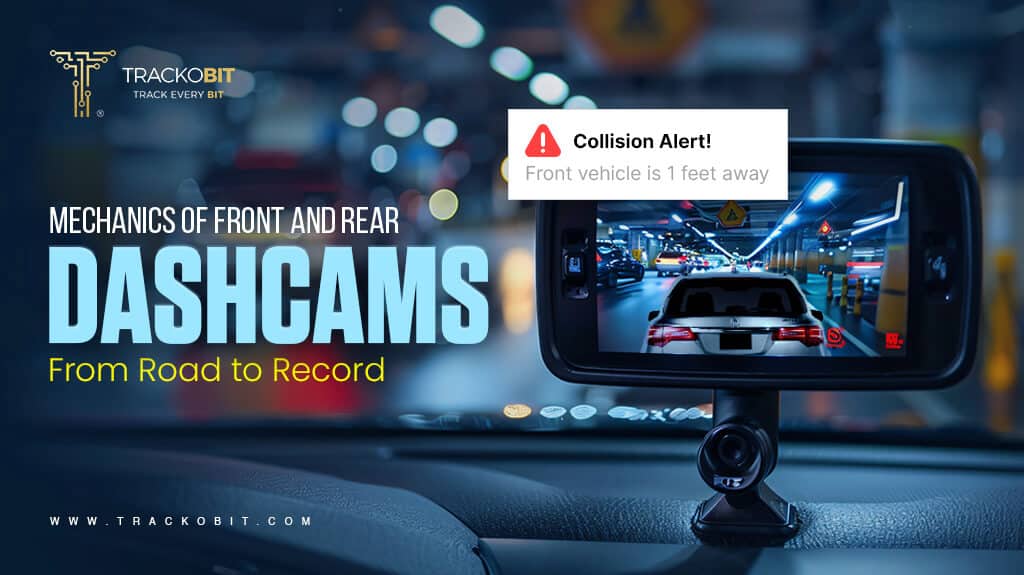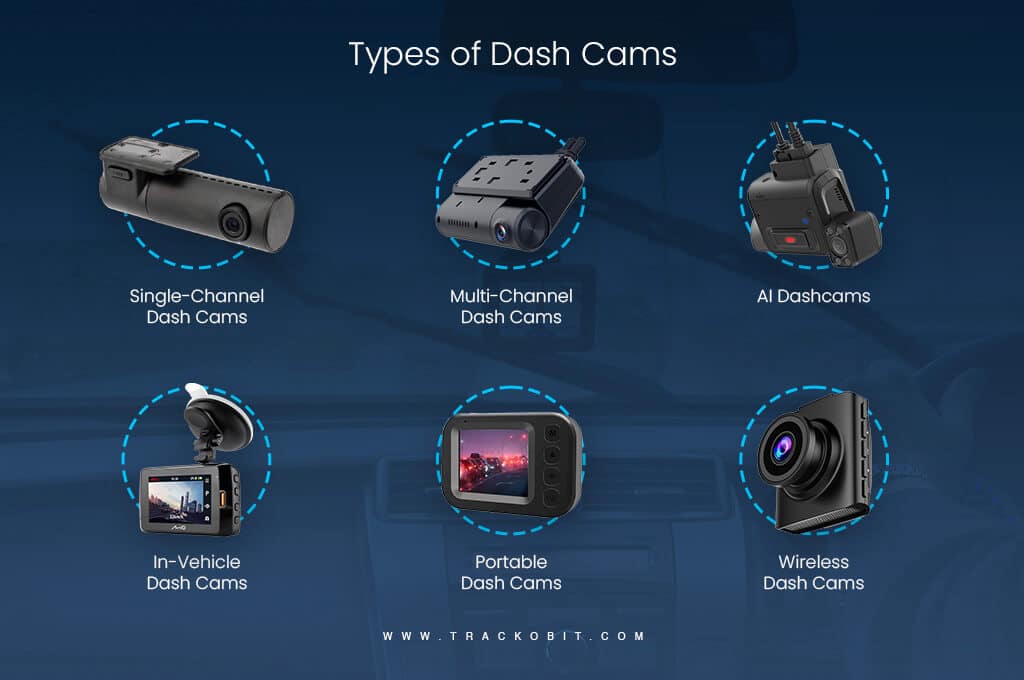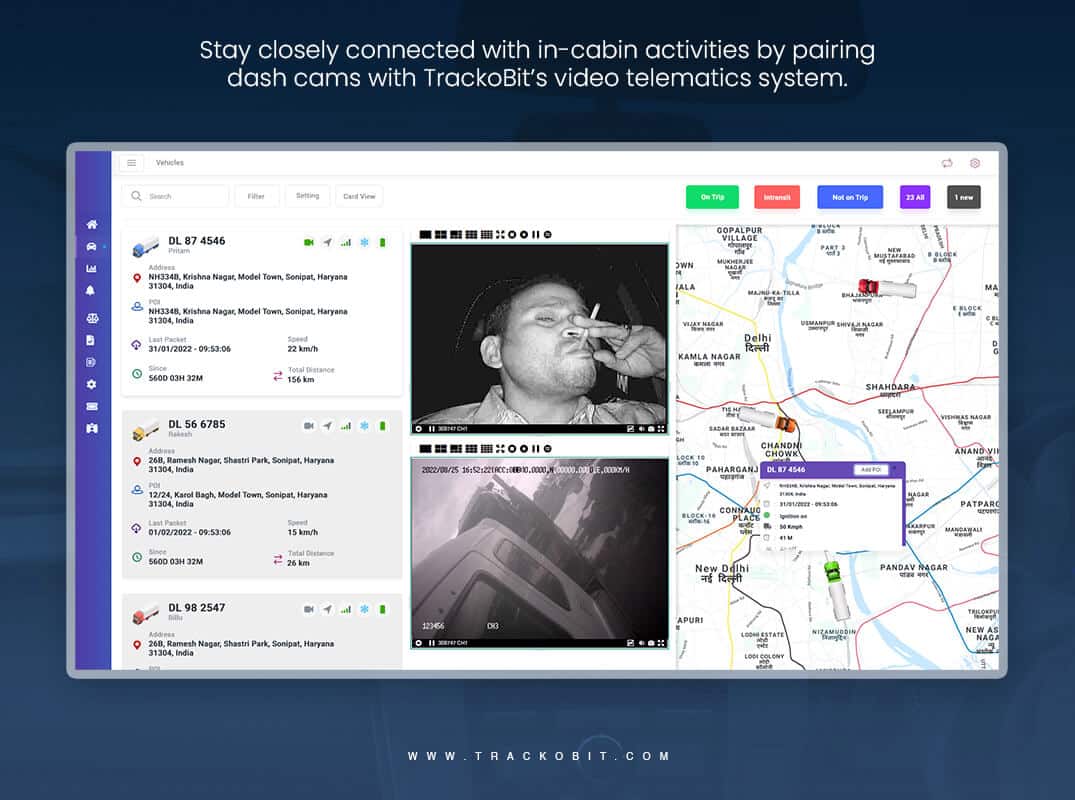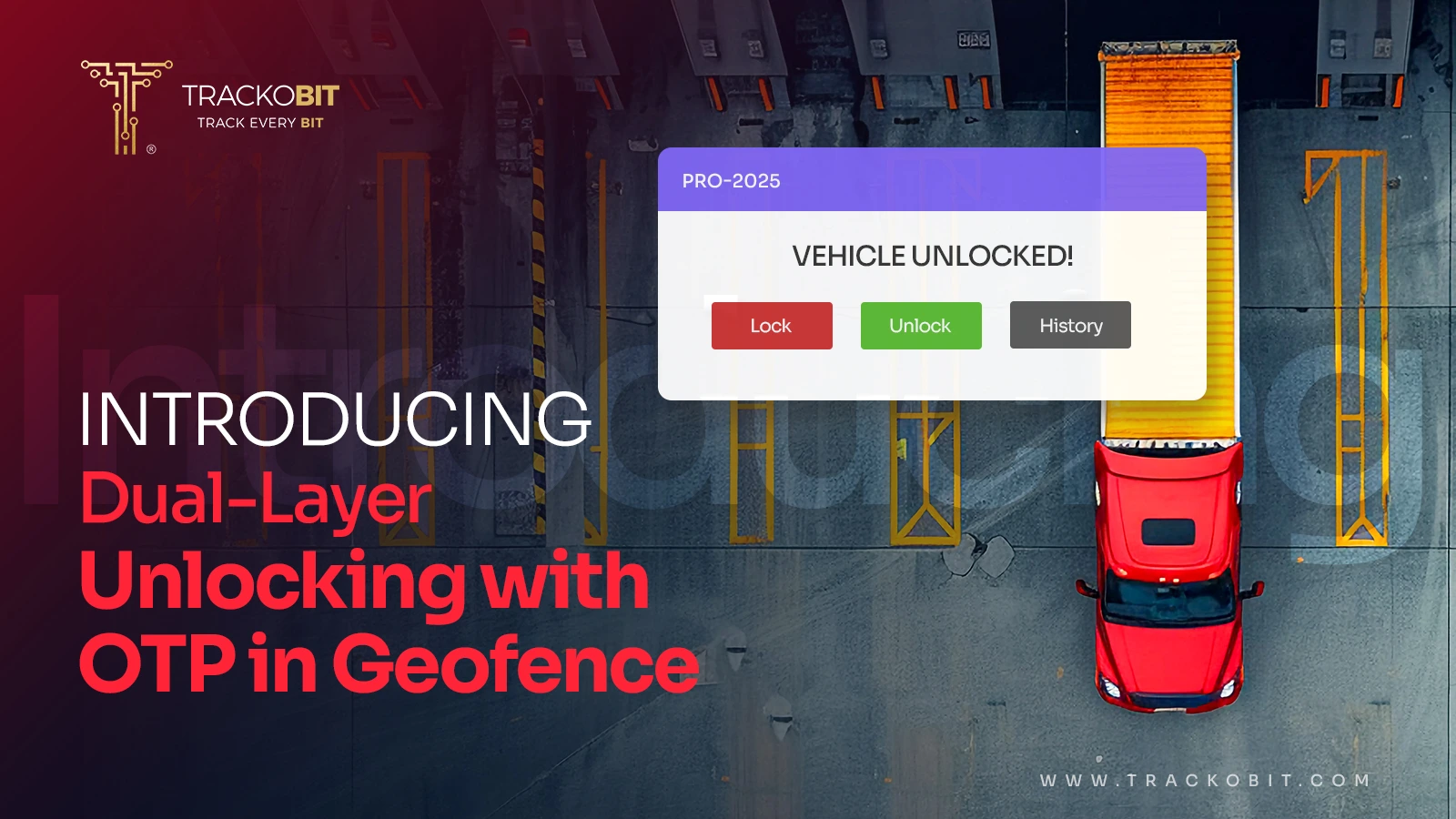-
TrackoBit
Manage commercial vehicles with the new-age Fleet Management Software
TrackoBit -
TrackoField
Streamline your scattered workforce with Field Force Management Software
TrackoField -
Features Resources
-
Blog
Carefully curated articles to update you on industrial trends. -
White Paper
Insightful papers and analysis on essential subject matters. -
Glossary
Explore an alphabetical list of relevant industry terms. -
What’s New
Get TrackoBit & TrackoField monthly updates here. -
Case Study
Explore the cases we solved with our diverse solutions. -
Comparisons
Compare platforms, features, and pricing to find your best fit.
-
About Us
Get to know TrackoBit: our team, ethos, values, and vision. -
Careers
Join the most dynamic cult of coders, creatives and changemakers. -
Tech Support
Learn about our technical support team and services in detail. -
Events
Check out the exhibitions where we left our marks and conquered. -
Contact Us
Connect with us and let us know how we can be of service.
How Do Front And Rear Dashcams Work?
- Author:Tithi Agarwal
- Read Time:9 min
- Published:
- Last Update: March 5, 2025
Table of Contents
Toggle
Front and rear dashcams can help reduce the chances of accidents, keep in sync with in-cabin activities, and reduce insurance costs. Read this article to learn how they work.
Table of Contents
Toggle
Fleet managers are always looking for ways to enhance driver safety. Why not try installing dashcams, which are the perfect way to monitor your vehicle both on and off the road?
These small cameras are attached to your vehicle’s dashboard and can capture clear footage of what happens on the road. One of the most in-demand features is a dash cam that can record both the front and the rearview.
This technology has empowered drivers of all types—motorcyclists, commercial truckers, rideshare contractors, and even private individuals operating passenger vehicles. They are able to capture video footage of their journeys and protect themselves from unwarranted liability in the event of an accident.
In this blog, we have covered dashcams, the wide range of variants available in the markets, and how combining them with TrackoBit’s telematics software can help enhance drivers’ safety.
What is a Dash Cam?
Dashboard cameras are small devices that record the road (and possibly your vehicle’s interior) as you drive. They help provide security and proof in case of an accident. These days, many dashcams have capabilities like motion detection, night vision, and GPS tracking. Some even have built-in Wi-Fi, allowing you to share and watch your recordings without taking the memory card out of the camera.
While some versions can be fastened to the rearview mirror or clipped onto clothing, most dashcams are intended to be installed on a car’s dashboard or windscreen. As long as the dashcam can clearly see the road ahead, its location is usually not a problem.
How Do Front And Rear Dashcams Work?
As the name implies, a front dashcam is installed on the front of the car, typically next to the windscreen. A rear dashcam is installed on the back of the car, usually next to the license plate. A front and back dash camera is often included in dashcam systems, offering a full HD wide-angle picture of the area around the car.
Though certain models might include a manual power button, turning on the ignition is usually how the cameras are switched on. Until the ignition is turned off, the cameras continue to record automatically. Certain dashcams have the ability to loop recordings, which means that as soon as the memory card fills up, the most recent film is replaced to make room for fresh ones.
Are Dash Cams Legal to Use?
Many states have rules governing the placement of placards, posters, stickers, and other opaque materials or items on the front windshield—basically, anything that makes it difficult for drivers to see the road properly. Before figuring out how and where to install your front-facing dash camera, it’s crucial to research your state’s windscreen obstruction rules because anything as simple as a handicap tag or parking permit hanging from the rearview mirror could be sufficient to trigger a driving offense.
In some jurisdictions, dashcam footage may not be admissible in court unless an affidavit attesting to its authenticity accompanies it from the driver. In other words, if you try to submit dashcam footage as evidence without having consent from the driver, the footage may not be allowed. This is why it’s important to consult with an attorney before attempting to use dashcam footage as evidence in a legal proceeding.
Here are some countries with their legality for dashcams:
| United States | Dashcams are legal to own in the United States, but there may be restrictions regarding audio recording and obstruction of view. |
| India | It’s legal as long as it doesn’t block a driver’s view or violate traffic rules. The footage is fully admissible in court. |
| Canada | It’s legal to use dahscams in Canada, but it shouldn’t obstruct the driver’s view. |
| United Kingdom | Dashcams are totally legal in the UK, and recording in public is allowed. However, the footage requires careful consideration of privacy laws. |
| Germany | In Germany, regular or fleet drivers can add dashcams. However, they must abide by strict data protection regulations. |
| Russia | In Russia, dashcams for vehicles are widely used and accepted as evidence in court. |
Types of Dash Cams – What all Kind to Add?
There are a number of different types of dash cams, each of which serves a specific purpose (or number of purposes):
1. Single-Channel Dash Cams
The most basic kind of dash cam is the single-channel model. One camera unit is included and installed on the dashboard or windscreen. Although this kind of dash cam usually costs less than multi-channel devices, its view of the area around the car is constrained. Installing it wherever the driver wishes to record video will allow for the greatest amount of coverage a dash cam can provide, even with a wide-angle lens.
2. Multi-Channel Dash Cams
A multi-channel dash cam includes two or more camera modules. These devices can be attached to clothing or mounted on the dashboard, windscreen, or back window. Compared to single-channel dash cams, multi-channel models offer a far broader angle view of the area around the vehicle. Although they usually cost more than dash cams with a single channel, they provide a more detailed view of the road.
3. AI-Powered Dash Cams
An artificial intelligence (AI) dash cam is a particular kind of dash cam that uses AI to recognize and capture abnormalities or occurrences. For instance, an AI dash cam may be able to track driver behavior, identify possible dangers, and offer real-time guidance or instructions to promote safe driving and overall a good driver behaviour.

4. In-Vehicle Dash Cams
Dash cams installed in cars are typically mounted permanently by an expert. These devices are hooked into the electrical system and linked to the car’s onboard computer. In-car dash cams usually provide the most extensive coverage of the environment around the car, along with the longest battery life and storage capacity. However, they are also the priciest kind of dash cam.
5. Portable Dash Cams
Portable dash cams are small, self-contained units that can be moved from one vehicle to another. They typically run on battery power, although some models can be hardwired into the vehicle’s electrical system. Portable dash cams are a good choice for drivers who use multiple vehicles or want the flexibility to remove the dash cam when leaving their vehicle.
6. Wireless Dash Cams
A wireless dash cam is a portable camera that transmits footage wirelessly to a receiver, either inside or outside the vehicle. This type of dash cam is typically used in commercial vehicles, such as buses or taxis, where the driver may not have direct access to the camera.
The Purpose of Rear And Front Dash Cams
Dashcams can record videos that are useful in various circumstances. The video footage can be used to establish fault in the event of an accident. If your car is taken, the authorities might be able to locate the burglar by using the footage. Additionally, the video might be used as evidence to help catch the offender.
With the combination of AI dashcams and telematics systems, fleet managers and drivers can receive notifications regarding unsafe driving, which increases efficiency and safety.
A dashcam is a wonderful place to start if you’re seeking a solution to increase your road safety. But remember, driving cautiously and attentively is the greatest approach to prevent an accident.
What To Look For When Choosing Front And Rear Dash Cams
When choosing a dash cam, there are a few things to remember.
a) Placement
First, consider the location of the camera mount. If you wish to install it permanently, select an in-vehicle model. If you’d prefer a more transportable option, seek a cordless or portable dash cam.
b) Coverage
Decide how many cameras you wish to have. If you want a full view of your surroundings, you need a front and back dash cam. However, if you only want to capture film from in front of the car, one front-facing camera will do the trick. Additionally, you might want an in-cab camera that records the entire truck or the driver.
c) Features
Consider the qualities that are significant to you.
- Would you prefer a camera that records the moment the car has started?
- Would you like a camera that you can operate with your smartphone?
- Would you like the one with a MicroSD card for storing photos?
- What is the frame rate (fps), and does the camera record with high dynamic range (HDR), which improves the Full HD night recording capabilities?
- What about an AI coach that can coach drivers in the cab while keeping an eye on their behavior?
Consider your requirements and select a dash cam with the desired features.
d) Price
Think about your spending plan. The most costly dash cams are in-car and AI models, but they also have the greatest functions. Although they are less expensive, cordless and portable dash cams might not include every feature found in an in-vehicle model. You can discover that the cameras more than paid for themselves after just one incident, which establishes that neither you nor your fleet driver was at fault!
If you have any questions about how AI dash cameras work when combined with the video telematics solution, please contact the TrackoBit team. We’re always happy to help!
Increase The Power Of Dash Cams With TrackoBit’s Video Telematics
Leverage AI dashcams with TrackoBit’s video telematics solution to scale your fleet management. TrackoBit, in combination with AI-powered dashcams, offers Advanced Driver Assistance Systems (ADAS) and Driver Monitoring Systems (DMS) that provide comprehensive monitoring and safety features.
ADAS includes forward collision warning, lane departure warning, and speed limit detection, which alert drivers to potential hazards and ensure compliance with traffic laws. DMS focuses on driver behavior, detecting signs of fatigue, distractions, and seatbelt usage to promote safer driving practices.
By capturing these events in real-time, fleet managers gain valuable insights into driver behavior and road conditions, enhancing overall safety and efficiency. This solution allows for proactive alerts and recordings to prevent accidents, detailed behavior analysis for targeted training, incident documentation for accurate assessments, and compliance monitoring to adhere to road safety regulations.

TrackoBit’s video telematics solution empowers fleet managers with the tools to visually monitor, analyze, and improve their fleet’s performance, ensuring a safer and more efficient operation.
Remember, while dash cams are a great tool, the best safety measure is always cautious and attentive driving. Stay safe out there!
FAQs on How Front and Rear Dashcams Work
-
Is it best to have a front and rear dash cam?
A front and rear dash cam system can offer a more complete view of your surroundings and provide evidence in case of an incident. A rear-facing camera can be particularly useful if you get hit from behind, as 28% of accidents involve a rear-end collision. Front-facing cameras alone can't capture rear-impact details.
-
Do rear dash cameras record all the time?
Most dash cams record when the car's engine is on, but they don't usually record continuously when the vehicle is off. However, some dash cams have a parking mode that allows them to keep recording even after the vehicle is turned off. This mode can provide 24-hour surveillance for car security. Some dash cams can also be triggered to record by events like motion or impact detection.
-
Do dashcams drain the battery?
Dash cams generally don't drain a car battery because they use minimal power. Dash cams typically use less than 5 watts when recording and even less when in parking mode.
-
How do dashcams work?
Dash cams, or dashboard cameras, are mounted on a car's windshield or back and record the road while the car is in use. They are powered by the car's electrical system, either through a cigarette lighter cable or by being hardwired into the fuse box.
-
Is it legal to use dashcams in India?
It’s legal as long as it doesn’t block a driver’s view or violate traffic rules. The footage is fully admissible in court.
Tithi Agarwal is an established content marketing specialist with years of experience in Telematics and the SaaS domain. With a strong background in literature and industrial expertise in technical wr... Read More
Related Blogs
-

What Makes TrackoBit’s Video Telematics Software Truly Next-Gen?
Shemanti Ghosh December 17, 2025TrackoBit’s video telematics software blends smart video intelligence with full server control. The result? Superior fleet reliability and safety.
-

Plug, Pair, Perform TrackoBit Introduces BLE Sensor Integration
Tithi Agarwal November 26, 2025TrackoBit’s BLE Sensor Integration enables wireless, real-time monitoring with faster installs and accurate insights. It improves fleet efficiency, visibility, and…
-

How to Use Driver Behavior Reports as a Sales Hook to Close Big Fleets
Tithi Agarwal October 16, 2025TrackoBit’s driver behavior reports empower fleet providers to win big contracts by showcasing safety, efficiency, and measurable ROI.
-

TrackoBit’s Unlocking in Geofence with OTP: Elevating Cargo Protection
Tithi Agarwal September 16, 2025TrackoBit’s latest feature – Unlocking in Geofence with OTP lets you lock out theft and unlock cargo only at the…

Subscribe for weekly tips to optimize your fleet’s potential!
Your inbox awaits a welcome email. Stay tuned for the latest blog updates & expert insights.
"While you're here, dive into some more reads or grab quick bites from our social platforms!"Stay Updated on tech, telematics and mobility. Don't miss out on the latest in the industry.
We use cookies to enhance and personalize your browsing experience. By continuing to use our website, you agree to our Privacy Policy.



































